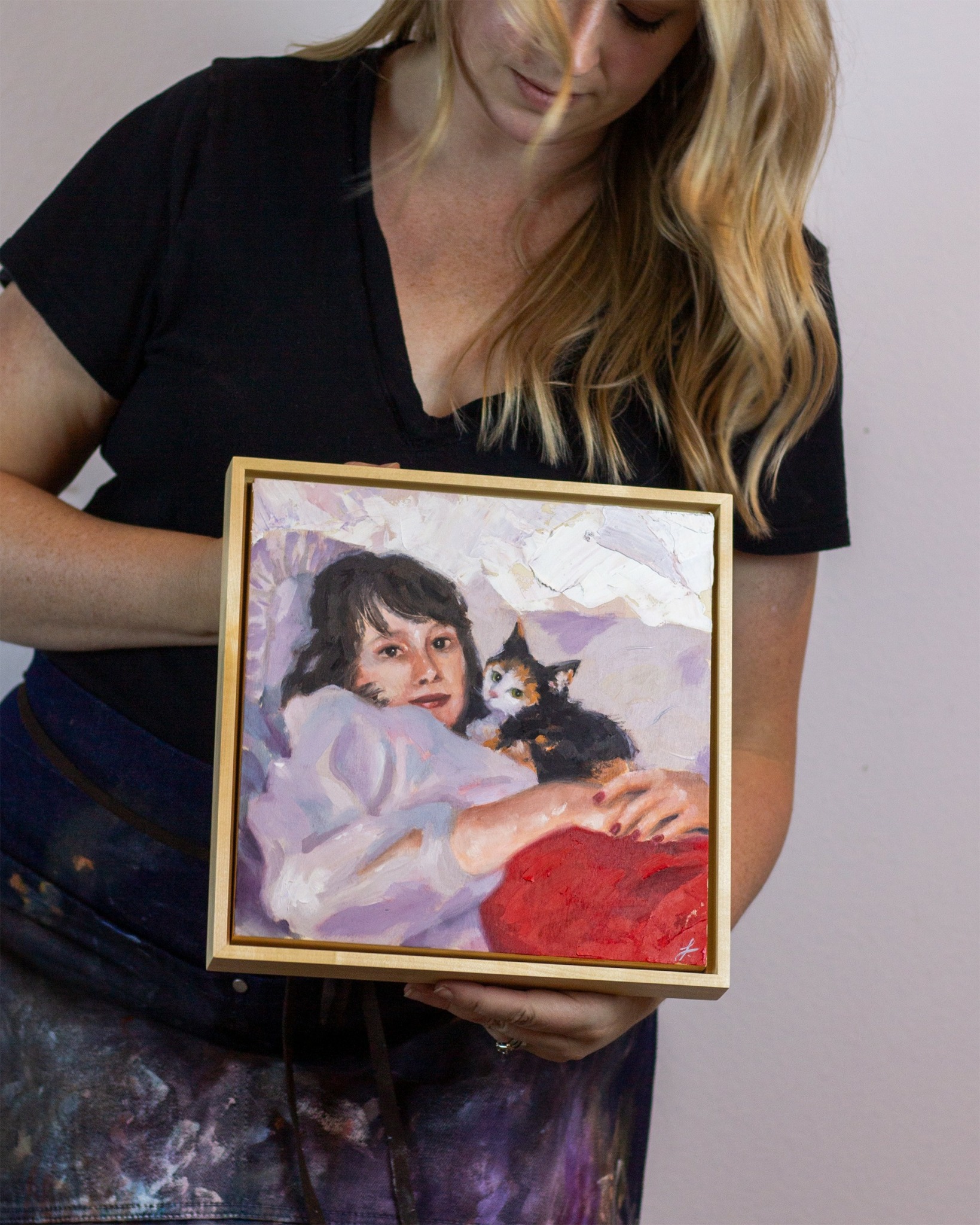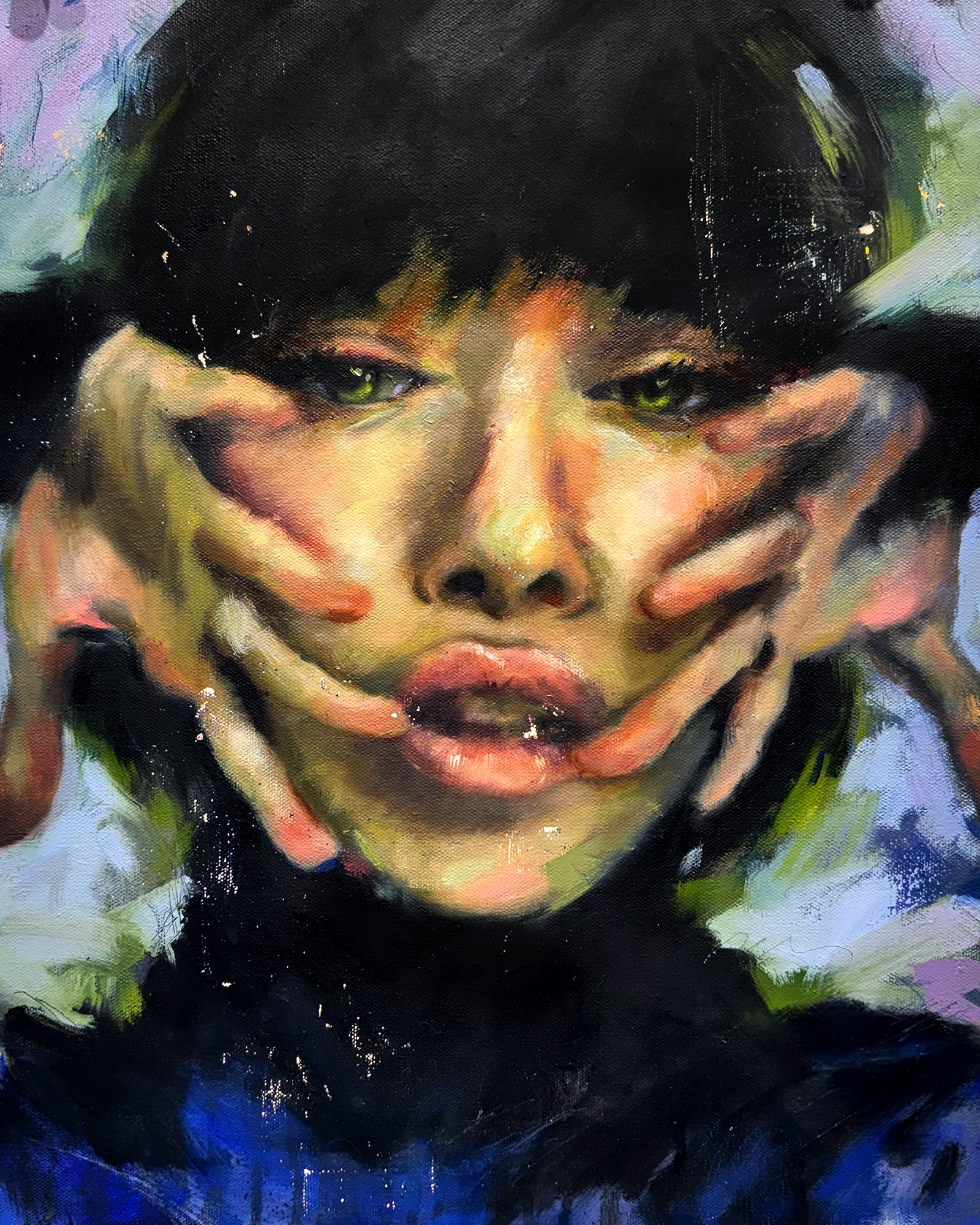We caught up with the brilliant and insightful Elizabeth Lancaster a few weeks ago and have shared our conversation below.
Elizabeth, thanks for taking the time to share your stories with us today Can you talk to us about how you learned to do what you do?
I’ve been drawn to painting and the arts for as long as I can remember. From a young age, I knew I wanted to create, but it wasn’t until I committed to seriously studying my craft as a teenager—exploring different mediums, subjects, and styles—that I realized this was more than a hobby. Choosing to pursue an art major gave me the structure and space to hone my skills and build the foundation for the artist I am today.
Oil painting, like any discipline, requires time and dedication. It’s not unlike going to the gym—you have to show up consistently to get stronger. While painting is often my happy place, there are still days when it’s tough to sit down, focus, and truly push myself. That’s the beauty and the challenge of having a “practice”—knowing that growth comes from being present in the process, not just producing perfect results.
Looking back, I think one of the most valuable lessons was learning to explore freely, without putting too much pressure on the outcome. I grew the most when I experimented under different constraints—working from life, painting large and small, setting time limits, exploring realism and abstraction, or painting en plein air. Each of these approaches was like a workout for a different muscle. That kind of variety helped me strengthen my skills and find the techniques and language that felt most natural to me.
The mindset of open exploration was essential to my growth. It allowed me to branch out, try new things, and gradually develop a style that felt true to me—something I couldn’t have reached without pushing outside my comfort zone.
The biggest obstacle, then and now, has always been consistency. Life has a way of pulling attention away from the studio, and it takes real discipline to keep returning to that creative space. One of the best pieces of advice I’ve received from other artists is to build an environment that invites creativity. In my studio, I play records on my record player, keep the windows open to let in the breeze, surround myself with postcards, photos, and pieces of inspiration on the walls, and leave open space to move around and step back from my work. All of this helps reduce the friction and make it easier to drop into that creative flow.

Great, appreciate you sharing that with us. Before we ask you to share more of your insights, can you take a moment to introduce yourself and how you got to where you are today to our readers.
I’m an oil painter and visual storyteller who creates work that sits at the intersection of beauty, emotion, and deeper meaning. I’ve always been drawn to the arts—sketching, painting, experimenting—ever since I was a child. But it was in my teenage years that I began to take it more seriously, exploring different mediums and styles with the intention of pushing my skills further. That period of exploration solidified my decision to pursue an art major, which gave me the tools and space to build a stronger foundation as a painter.
My work today is primarily oil-based, and I’m especially interested in combining realism with expressive, sometimes raw textures—each piece is layered with symbolism, restraint, and emotional weight. Whether I’m painting a portrait or a still life, I’m always thinking about how the viewer will emotionally engage with the piece and what story or contradiction might be living beneath the surface. One of my recent works, for example, juxtaposed a lush bouquet of flowers with a newspaper bearing the headline “World Ending”—a visual tension between hope and despair that speaks to our current moment.
While I don’t provide a traditional “service” in the business sense, my creative work offers something that can be just as impactful—connection. My collectors and clients often come to me because something in the work speaks to a feeling they haven’t been able to put into words. My paintings invite the viewer to pause and reflect, to sit in a space of complexity, contradiction, or quiet power. That emotional resonance is what I strive to offer through every piece.
What sets my work apart is the storytelling behind it. I’m less interested in painting something just because it’s beautiful—I want to create work that means something. My pieces often hold layered metaphors, subtle nods to social or psychological themes, and an attention to detail that allows the viewer to find something new each time they revisit it.
What I’m most proud of is how far I’ve come in developing a visual language that feels authentic to me—one that balances technical skill with vulnerability, clarity with texture, beauty with bite. I’ve learned to trust my instincts, challenge myself, and keep showing up to the work even when it feels difficult or uncertain. And I’ve been fortunate to connect with people who see themselves in the work—that’s the real reward.
For anyone discovering me for the first time, I’d want them to know that every piece I create is rooted in curiosity and care. I’m constantly pushing myself to grow, to question, and to deepen my voice as an artist. My hope is that my work doesn’t just decorate a space—it opens up a conversation, an emotion, or a moment of pause.

What do you find most rewarding about being a creative?
The most rewarding part of being an artist is turning emotion and thought into something tangible—something others can see and connect with. There’s a quiet magic in watching an idea take shape on canvas, and even more so when someone else sees themselves in it. The process itself is deeply grounding, and those moments of connection between artist and viewer are what keep me coming back to the work.

In your view, what can society to do to best support artists, creatives and a thriving creative ecosystem?
One of the best ways to support artists is to be more curious and intentional—seek out local creatives, attend art fairs, and explore original art (it might be more accessible than you think). As individuals, following and engaging with artists on Instagram, joining email lists, or even just reaching out to say you enjoy their work can go a long way.
Organizations and brands also have a huge role to play. Consider inviting local artists into your space, partnering on events, or collaborating on creative projects. I love seeing companies like Stanley commission artists for limited-edition designs—it’s a great example of how businesses can champion the arts in thoughtful, mutually beneficial ways.
A thriving creative ecosystem depends on all of us showing up—in big and small ways—to celebrate and invest in the people who shape culture.
Contact Info:
- Website: https://www.lizlancasterart.com
- Instagram: @lizllancaster

Image Credits
Ismael Arenas Photography, Derek Hall Derelique Visuals


